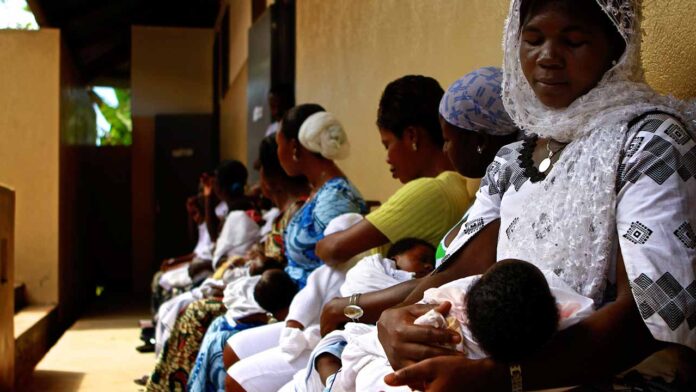The target looks good. By 2030, the Nigerian government hopes to reduce maternal mortality rate, MMR, to 196 per 100,000 live births, in line with the United Nations, UN, goal of 70 deaths per 100,000.
Five years to the date, however, available facts have shown that the country’s MMR is a worrisome development.
The country’s rate of 1,047 deaths per 100,000 births in 2020 was the third-highest maternal mortality in Africa and far from
The grim picture puts the country as the second highest number of maternal deaths globally. Although it declined to 993 in 2023, today’s figure is significantly higher than the regional average.
The World Health Organisation, WHO, notes that Nigeria accounts for nearly 28.5 per cent of global MMR, with many of these deaths occurring in rural areas.
Experts say Nigeria faces a significant challenge in addressing this high maternal mortality rate due to several factors including limited access to quality healthcare, poverty, conflict, and unsafe abortion practices.
In the rural areas, lack of skilled birth attendants, and inadequate health infrastructure contribute to the high rate of maternal mortality.
The high MMR has also been linked to poverty and socio-economic factors such as limited access to education, resources, and nutritious food; cultural practices and beliefs which inhibit adoption of modern healthcare practices.
Furthermore, conflict and insecurity across the country have continued to prevent pregnant women from access to healthcare just as prevalence of certain health conditions such as hypertension, obstetric hemorrhage, and sepsis are leading causes of maternal death.
Studies have shown that urban areas generally have lower MMRs compared to rural areas. The high MMR is prevalent in the North East and North West regions of Nigeria, where conflict and displacement have significantly impacted access to healthcare.
Some states including Katsina, Zamfara, and Kano are known to have consistently reported higher-than-average MMRs.
As the federal and state governments battle to meet the 2030 target date, we call for improved maternal health outcomes through targeted interventions and policy reforms.
For instance, all levels of government must strive to attain meet the recommendation of the World Health Organisation, WHO, for a functioning healthcare system of one doctor for every 600 people.
Currently, the ratio is one doctor for between 4,000 and 5,000 patients.
Also, the governments need to increase budgets for health which WHO thinks should be at least 15 percent of any annual fiscal package.
Instructively, last year, the federal government only budgeted five percent for healthcare, shamefully way below UN recommendation.
Nigeria must work with various organisations, both local and foreign, to improve maternal health by increasing access to skilled birth attendance, promoting family planning, and addressing the underlying social and economic factors that contribute to high MMRs.
In addition, governments at all levels must embark on interventions including training and deployment of more skilled birth attendants, improving health infrastructure, and strengthening community health systems.
We commend many states including Plateau, Benue and Osun where deliberate efforts are being made to address seriously rural healthcare and ultimately reduce MMR.
Also, worthy of note is Ondo State’s successful introduction of low-cost or free maternal services, a programme that drew hundreds of thousands of women from across the state and significantly reduced MMR in the state during the period.
Under the policy, early registration and proper preparation for childbirth by pregnant women was the focus, with the belief that if more women access proper medical care early, tragic deaths can be avoided.
We enjoin other states to key into the drive for improved healthcare in a bid to meet the world target by 2030.
“Nigeria must work with various organisations, both local and foreign, to improve maternal health by increasing access to skilled birth attendance, promoting family planning, and addressing the underlying social and economic factors that contribute to high MMRs.”

